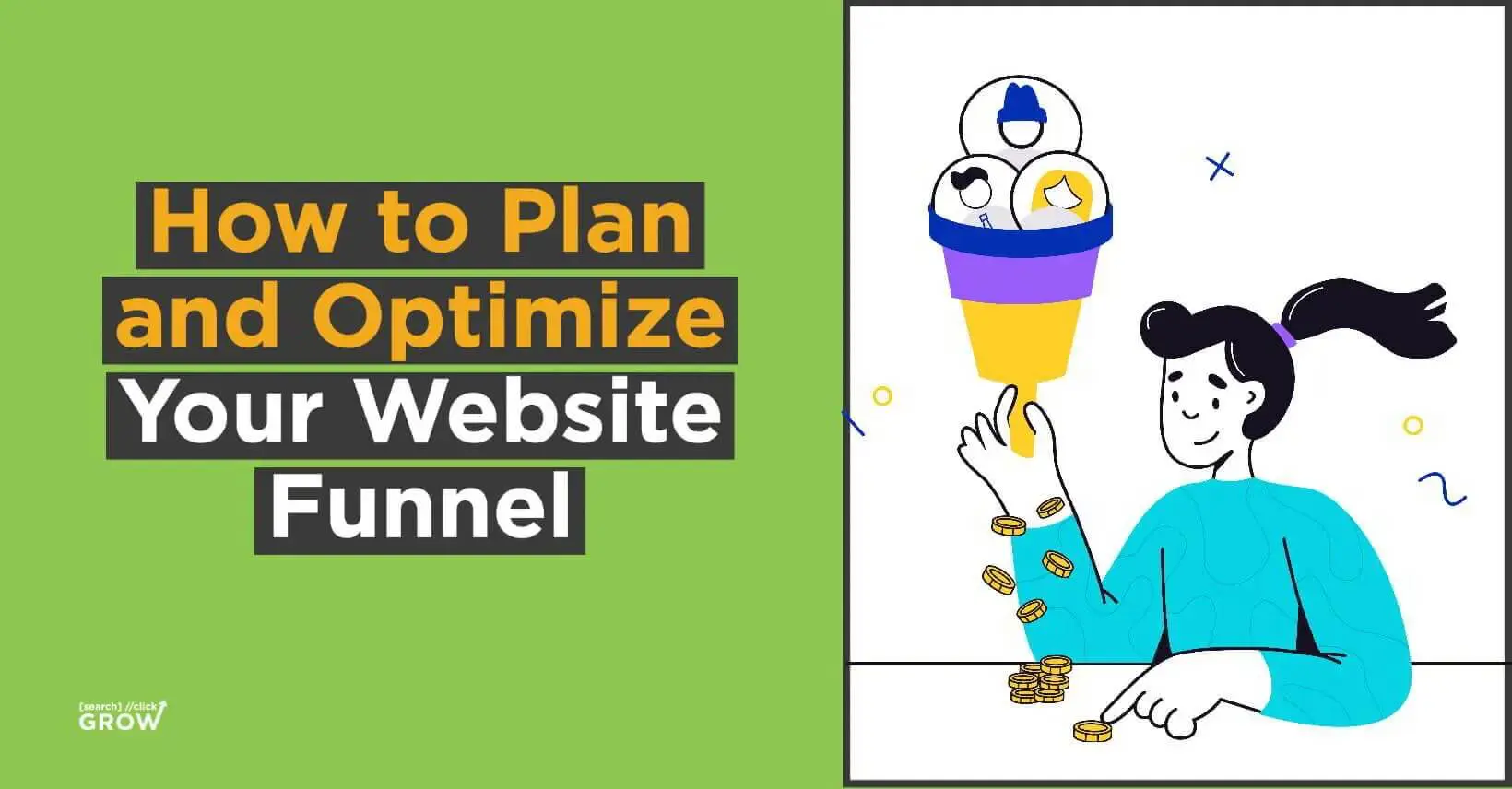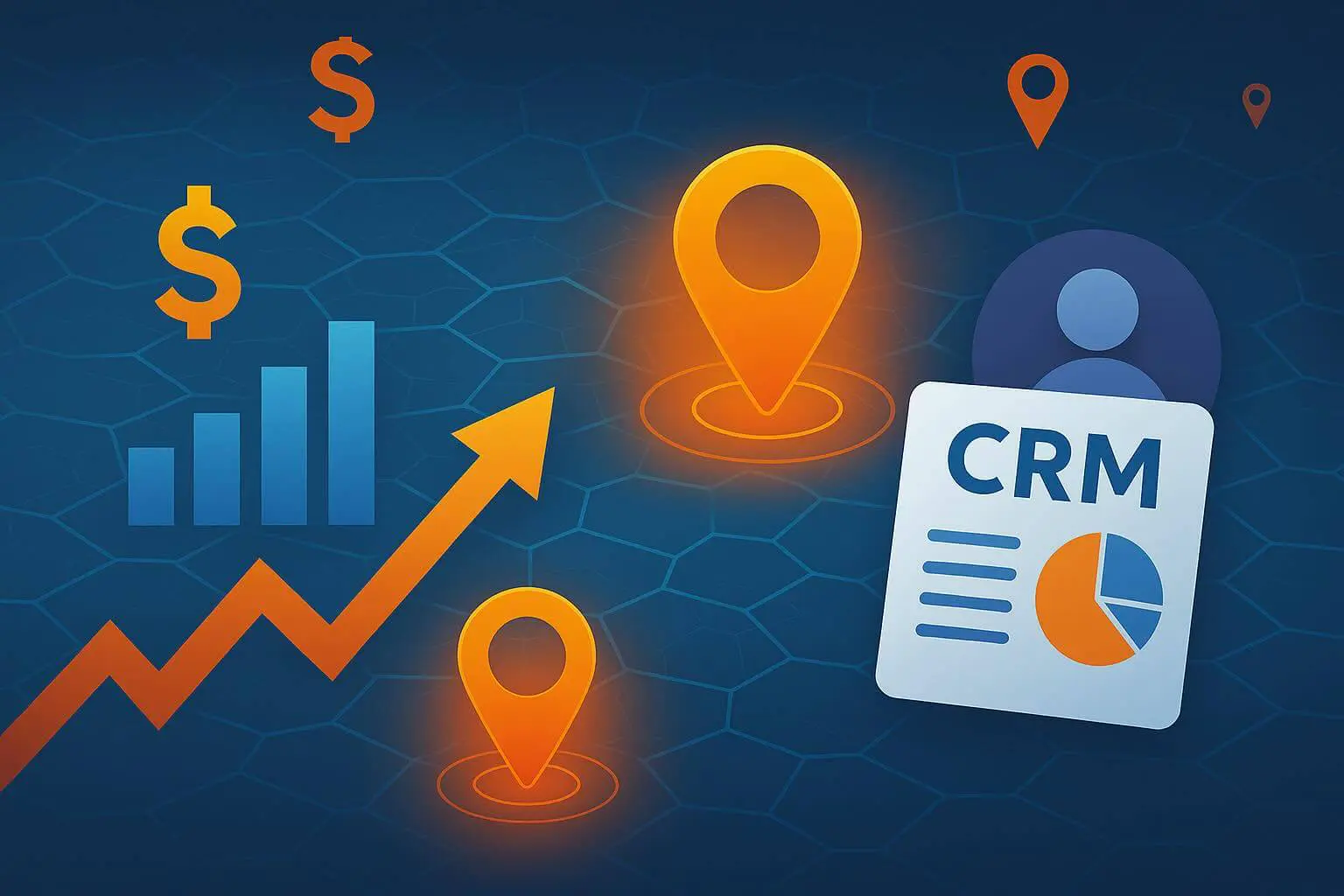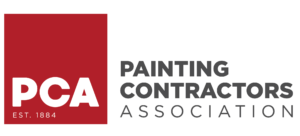
How to Plan and Optimize Your Website Funnel
WebsiteWhen it comes to digital marketing, one of the most effective tools for creating efficient customer journeys is website funnels. If you’re not using website funnels to optimize your marketing efforts, you’re missing out on a huge opportunity to increase conversions and sales.
If you don’t have an effective website funnel, you risk losing out on potential customers and revenue, as your prospects may get lost or confused and abandon the purchase altogether. Website funnels are essential for any digital marketing strategy because they help guide users through the buying process.
To improve your customers’ journey and increase your sales, you must understand how to plan and optimize your website funnel. A well-designed website funnel can efficiently help guide customers from awareness to purchase.
By the end of this blog, we promise to equip you with the knowledge needed to plan, create, and optimize an effective website funnel. We’ll also explain why creating a website funnel is essential to your digital marketing strategy and provide tips for creating yours.
What Is a Website Funnel?
A website funnel is a series of web pages leading to the purchase of a product or service. It acts like a blueprint that helps you map out the entire sales process from point A to point B, allowing you to control the purchase process and the customer’s journey.
When creating a website funnel, envision your end goal and work backward. In digital marketing, the typical goal is to turn visitors into customers by guiding them through the purchase process and providing an easy-to-follow path to conversion.
You should be able to capture visitor information and nurture them through learning about your products or services.
To do this, you need to define your customer’s journey and plan out each step of the funnel. This includes knowing your target audience and what you want their journey to be like.
How to Plan & Optimize Your Funnel Website In 3 Essential Steps
Before you can create a website funnel, you need to determine who your target audience is.
Knowing who your ideal customer is will help you make an effective website funnel that meets their needs and leads them to the purchase decision.
1. Create a Customer Persona
Start by asking yourself these basic questions to help you better understand who your ideal customer is:
- Who are they?
- What do they need?
- How can your products or services help them?
You can create a customer persona or avatar which describes your ideal customer. Consider factors such as:
- Age
- Gender
- Personality
- Interests
- Education
- Employment
- Income level
- Geographical location
It helps to look at your best and worst customers and find common similarities and patterns. This will give you a better understanding of your target audience and help you create a list of avatar dos and don’ts.
Thoroughly examine your best customers and determine why they chose you over the competition. Analyze their buying habits and the features that appealed to them and try to replicate their experience with other potential customers in your website funnel.
Analyzing your best and worst customers is also beneficial when creating your website funnel, as it will help you identify and remove any potential obstacles blocking the purchase decision. It also enables you to create a message that attracts your ideal customers and pushes away those who are not a good fit.
2. Identify Your Customers’ Pain Points
Next, you need to identify your customer’s pain points and determine how you can help them.
You should consider what challenges they are facing and how your product or service can be the solution to their problem.
- Building trust with potential and existing customers and demonstrating that you understand their needs is critical. This will make it easier for them to move through the website funnel and make a purchase.
- You can ask your past customers what they liked about you, what they’re looking for in a product or service, and what motivates them to take action. You should also identify their pain points and the solutions you can offer to help them.
- Be sure you’re intentionally listening to what your customers are saying and what they are not saying. Doing this will help you provide the right solution and create a more effective website funnel that addresses their needs and encourages them to buy from you.
Remember that when you speak with your customers, you might think they’re all saying the same thing. They’re not — watch out for the differences in their language.
For example:
Two clients may want to focus on SEO. One may be talking about outranking their competitors because they know they are better, while the other may be talking about ranking high for specific keywords to help them create a lead flow.
In both instances, you need to offer an SEO solution. Still, it’s essential to understand what specific language your customers are using so that you can tailor your message and create a more effective website funnel.
3. Set Goals for Your Website Funnel
Once you have identified your target audience and their pain points, it’s time to plan your goals.
- Set long-term goals: Start by setting realistic yet achievable long-term goals for your website funnel. When you create your long-term goals, think about what scale you want to be at. Determine what goals you want to achieve one, three, five years from now — or even more.
- Set milestones or checkpoints: Make sure that you have goals between each long-term goal that act as checkpoints or milestones that can help you launch and test ideas to reach your final destination.
- Set short-term goals: When planning for the future, it is also vital to consider your short-term goals. These should be measurable, achievable within a reasonable time frame, and give you valuable feedback. Be sure that your short-term goals align with your long-term goals to help you build momentum and keep you on track.
You also need to plan for the worst-case scenarios to help address any potential issues. This will ensure that if something unexpected arises, you can quickly react and adjust your website funnel while staying on track with your long-term goals.
Additionally, you can use multiple channels to scale your website funnel and reach a larger audience. You can use social media, email marketing, and other digital marketing channels to optimize your website funnel and reach more potential customers.
How Does A Website Funnel Work
Once you have determined your ideal customer and planned your goals, you can create a website funnel. A website funnel is a pathway that leads customers through sales.
Note that there’s no one-size-fits-all approach to creating a website funnel.
Depending on your ideal customers and the type of product or service you are offering, you may need to modify your funnel and adjust it over time to ensure it remains effective.
The essential parts of any website funnel include the following:
1. Traffic Source
This is the first step in your funnel, which involves getting visitors to your website. You can use different methods that will bring potential customers to your website, including:
- Online ads
- Google ads
- Google Maps
- Organic search
- Social media
- Email campaigns
- Content marketing
The more visitors you have, the higher your chance will be of converting them.
2. Lead Form or Landing Page
The lead form or landing page is the page where visitors will enter their information and become leads. Your lead form should be optimized to capture potential customers’ contact details, such as:
- Name
- Phone number
- Email address
- Other relevant information
This part of your website funnel should persuade potential clients to call, get a quote, schedule a visit, or learn more about your products and services.
You can also use this to promote special offers, discounts, and other incentives to engage potential customers further.
3. Thank You Page
The thank-you page is where visitors will be redirected after filling out your lead form or landing page. It should thank them for providing their contact information and provide them with a clear call to action (CTA) to continue their journey through your website funnel.
- The thank-you page helps set expectations for your visitors and makes them feel appreciated.
- You can also use it to provide additional information about your products and services, invite customers to follow you on social media, or provide additional resources, such as blog posts, e-books, or other related content.
Essentially, this page acknowledges and thanks visitors for taking the first step, encourages them to keep going down your funnel, and gives them something else to do while they’re still interested.
4. Initiate Contact
Once you’ve collected your visitors’ contact details, it’s time to initiate contact. You can call, text, or email to start a conversation with customers.
Make sure you personalize your messages and use language that resonates with your ideal customer. Keep the message short and to the point and explain what makes your product or service unique, why it would benefit them, and how it addresses their needs.
Aim to schedule a meeting by the end of your conversation and incentivize customers to book a call or appointment with you.
5. Meeting
This is the part of your funnel where customers can learn more about your product or service, ask questions, and get a feel for how it works. Depending on the type of product or service you are offering, this could be an in-person meeting, a phone call, or even a Zoom meeting.
Give customers all the information they need to make an informed decision. Explain how your product or service works and be ready to answer any questions they may have.
Make sure to give your all when giving customer service and aim to leave customers feeling satisfied. This is also an excellent opportunity to build trust and establish a personal connection with your potential customers.
6. Purchase
Purchase is the final step in your website funnel and involves converting leads into customers.
Once customers have gone through your sales process, it’s time to make their purchases.
- Provide a secure payment option: Ensure you provide them with an easy way to complete their purchase, such as a secure payment option or a link allowing them to pay for goods and services online.
- Follow up with your customers: After their purchase, follow up with them and thank them for choosing your business. You can also check in to make sure they’re happy with their purchase and address any concerns they may have.
7. Drop Off
Potential customers may drop off at any part of the funnel, and paying attention to this is essential. It’s crucial to have a system in place to ensure that customers follow through with their purchases.
If a customer drops off or doesn’t complete the purchase, reach out and see if everything is okay. You can also use automated emails or retargeting ads to remind them of your product and incentivize them to complete their purchase.
While fall-offs are missed opportunities, they allow you to refine and optimize your funnel and messaging to ensure customers continue down the path and convert into paying customers.
What Should You Measure?
Measuring the performance of your website funnel is essential if you want to optimize it and increase conversions.
- Start with listing how much you spend on your ads, whether you use Google ads, influencer marketing, an agency, or any other form of advertising.
- Track key performance indicators (KPIs) such as overall costs, total clicks, website visits, leads, meetings, conversions, revenue, and customer lifetime value. This data is essential to understanding the performance of your funnel and determining which parts need optimization.
In Conclusion
Creating a website funnel is a great way to ensure that your ideal customers know about your product or service and have an easy path toward conversion. By understanding each stage of the funnel, from traffic source to purchase, you can create a tailored strategy for each step and optimize it for maximum conversions.
Now that you better understand how to plan and optimize your website funnel, you can implement the strategies outlined in this blog post. Take some time to analyze the performance of your existing funnel and identify areas for improvement.
For more information on website funnels and optimization strategies, Search Click Grow can help. We create effective website funnels that generate leads and increase conversions.
Book a breakthrough call with us today to learn more!






